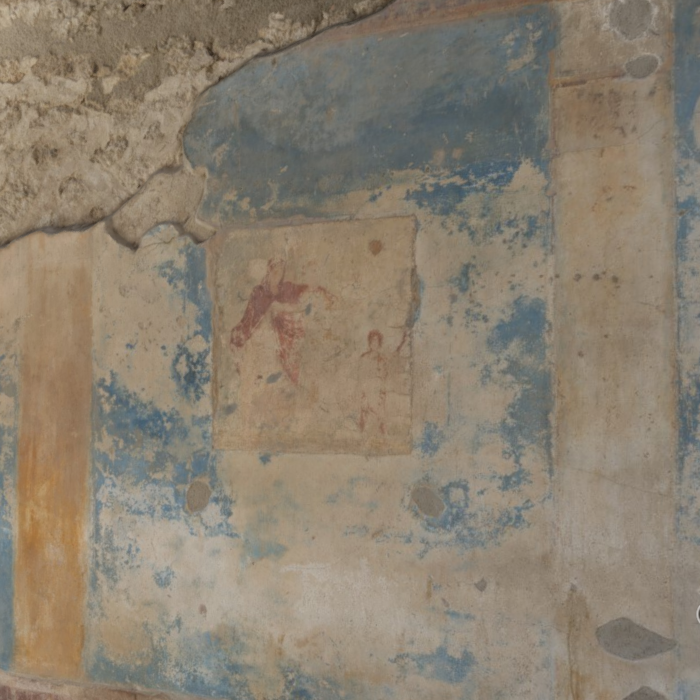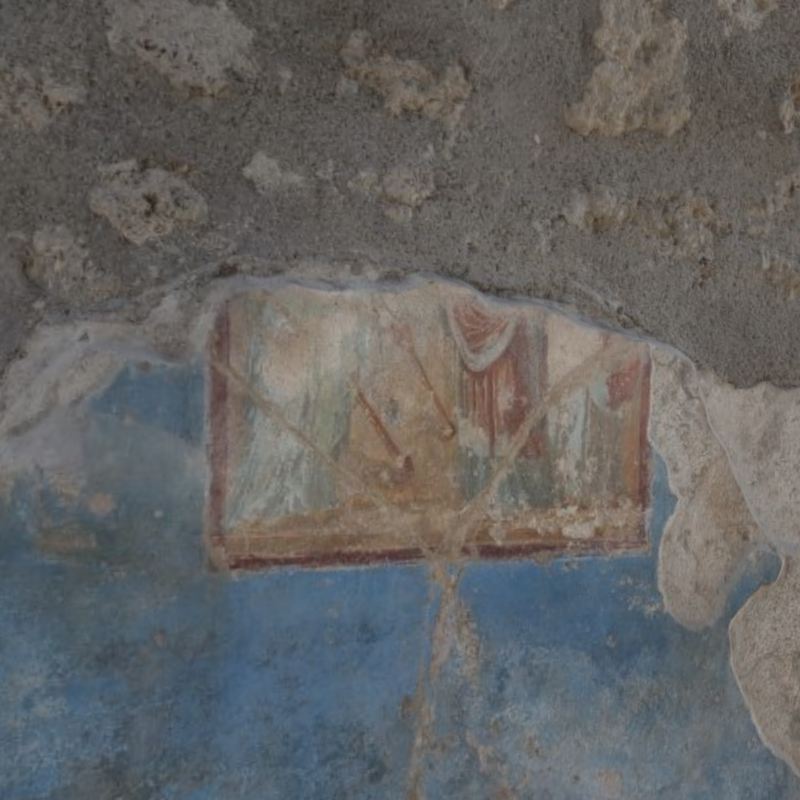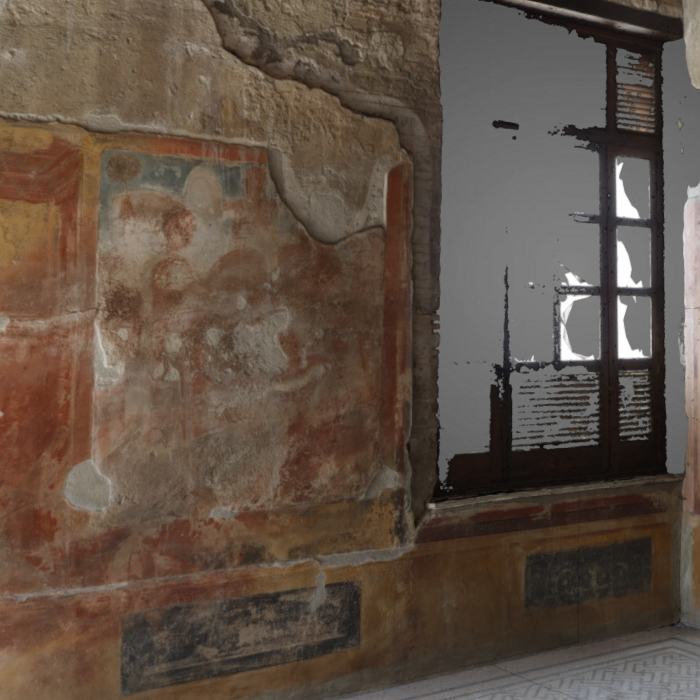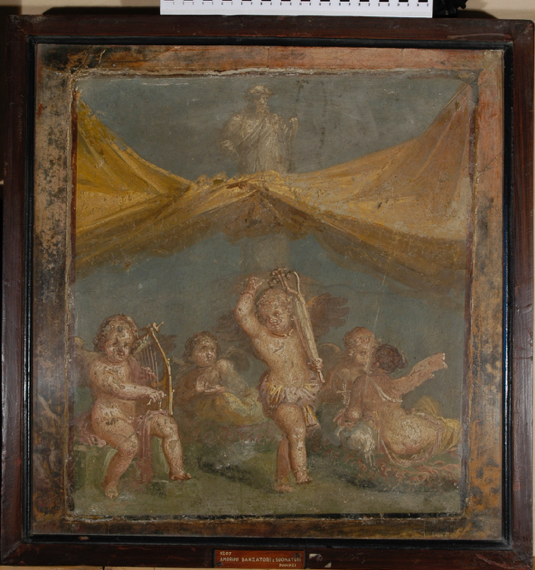The House of Marcus Lucretius
In the summer of 2017, our team completed the first round of digitization of the house itself. In the summer of 2018, we completed another round of photogrammetry, and digitized the sculpture from the garden currently located in the Pompeii Deposito. Please see the initial results of these campaigns below.
Working Drafts
“The Application of Photogrammetry to the Study of Roman Wall Painting” - https://drive.google.com/open?id=1S8LjlAIyF1rkgcJq5GCycVQQ7K5gAzFc
“The Garden in the House of Marcus Lucretius” - https://drive.google.com/open?id=13Gzki1OR55qeK7CkMj54A5xO3TPfY8uo
Room by Room
Interior displays are an area of great contemporary interest among Roman art historians and archaeologists. In the House of Marcus Lucretius at Pompeii (IX,3.5.24) the surrounding architecture, sculpture, and paintings combine to create a unique display in the central garden. Scholars have already noted that the space, and the ensemble within, appear to imitate a miniature stage. What has not been sufficiently explored is how the overall display might have operated as a background for domestic performance and spectacle in antiquity. This essay will briefly summarize the excavation history of the garden and investigate the spectacle created by the interior garden. As part of the project, it was beneficial to create digital presentation of the garden, along with its adjoining rooms, to consider multiple viewpoints into the garden.
Figure 1: Screenshot of 3D model: detail of the South wall.
Figure 2: Screenshot of 3D mode: detail of the North wall.
Room 1
Directly inside the entrance from the Via Stabiana, a set of wall paintings greet the visitor. On the south wall, the central panel of a tripartite friezes depicts three figures, a man, woman, and child, that seem to enter alongside a visitor. The female figure in the center plays a flute, while the man follows behind her, draping his arms over her shoulders. Both wear wreaths around their heads. The small child in front of them carries a walking stick, and looks back at the other two figures. Various scholars have identified this as a wedding scene, an illustration of Ceres and Proserpine Hecate , a scene of theatrical comedy, or a Dionysiac procession (Fig. 1, Pitture e Mosaici: 149). On the opposite north wall, the central panel has been heavily damaged, with the entire top half missing. What is visible of the panel shows two figures, one much larger than the other. This scene has been interpreted as a comedic scene (Fig. 2, Pitture e Mosaici: 145).
Minervini, Giulio. Bull. Arch. Nap, No. 82. N.S.4.1855-1856. http://digi.ub.uni-heidelberg.de/diglit/ban1855_1856/0074.
Baldassarre, I., Bragantini, I. and Sampaolo, V. (eds.). Pitture e Mosaici, Vol. IX, Regio IX, Parte II. Roma: Istituto della Enciclopedia italiana, 1990.
Mau, August. Geschichte Der Decorativen Wandmalerei In Pompeji. Berlin: G. Reimer, 1882.
Figure 3: West wall. Photo Courtesy: Museo Archeologico Nazionale di Napoli, 9285. Accessed via the Expeditio Pompeiana Universitatis Helsingiensis.
Figure 4: Screenshot of 3D Model, the window out into the garden.
Figure 6: Small panel from Room 16. Museo Archeologico Nazionale di Napoli, 9207. Accessed via the Expeditio Pompeiana Universitatis Helsingiensis.
Room 16
The central panel on the west wall depicts Dionysus leading a procession in an ox-drawn cart (Fig. 3), while to his left a man plays a set of pipes and a large container of liquid is lifted onto the wagon. On the north wall, he is depicted in triumph over a prisoner seated on a pile of weapons in front of him, while Victory writes a triumphal announcement on his shield (Fig. 4). On the south wall (Fig. 5), the strength of Dionysus is again celebrated by demonstrating his ability to conquer even the mighty, but drunken, Hercules. The smaller panels around the room depict cupids listening to instruments, or dancing freely in front of a large, raised statue in the background, or beneath tents (Figs. 6, 7).
Baldassarre, I., Bragantini, I. and Sampaolo, V. (eds.). Pitture e Mosaici, Vol. IX, Regio IX, Parte II. Roma: Istituto della Enciclopedia italiana, 1990.
V. Kockel, Schütze, Williams, and Fruhtrunk (eds.). Houses and monuments of Pompeii. Köln: Taschen, 2016.
Figure 5: South wall. Photo Courtesy: Museo Archeologico Nazionale di Napoli, 8992. Accessed via the Expeditio Pompeiana Universitatis Helsingiensis.
Figure 7: Small panel from Room 16. Museo Archeologico Nazionale di Napoli, 9206. Accessed via the Expeditio Pompeiana Universitatis Helsingiensis.
Related Essays
Sample of MA Thesis: Text + Figures.
Related Presentations
Digital House of Marcus Lucretius Project Update (Spring 2018)












